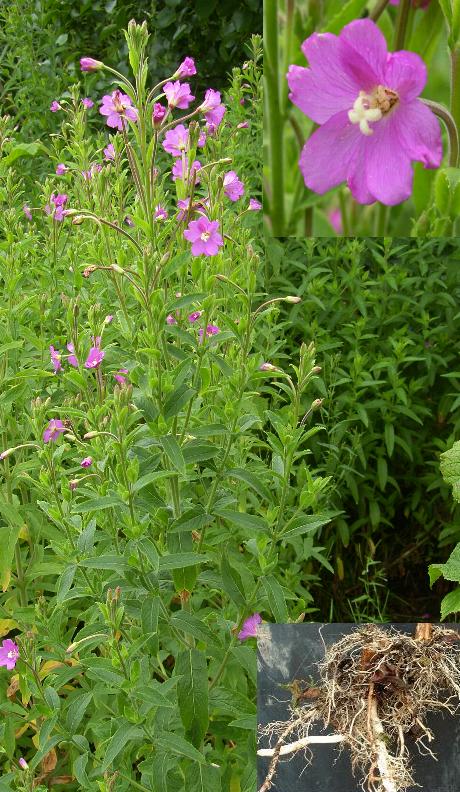Great WillowherbScientific Name: Epilobium hirsutum |
Perennial, speading by creeping underground stems and seed which are carried by the wind from the upright seed-pods, as they split lengthwise and curl open. The mature stem dies away in the autumn. It prefers damp, chalky soils; found by marshes and streams where it can form dense stands.
The lanceolate leaves have a fine toothed edge and are covered with fine hairs which give them a greyish tinge. The tall stems become branched at leaf axils near to the top, and are also covered with fine hairs.
It flowers during July and August - pale pink at the tip of a slender ovary, pollinated by flies and bees.
Height - up to 1.2 m.
May be mistaken for Rosebay Willowherb which grows to a similar height and has the same creeping rhizomes. But the latter is not hairy and the flowerhead is a spike with many more individual flowers on it.
Easily uprooted when young, but the white underground stems are brittle.
Weedkillers to use:-
Dichlobenil prevents emergence of seedlings among established
woody plants, for up to one year.
Paraquat, Diquat kills top growth on contact, use at seedling stage.
Glyphosate, systemic action killing the whole plant.
Follow these links for further details on Weeds, Weed Removal and Weed Prevention.
